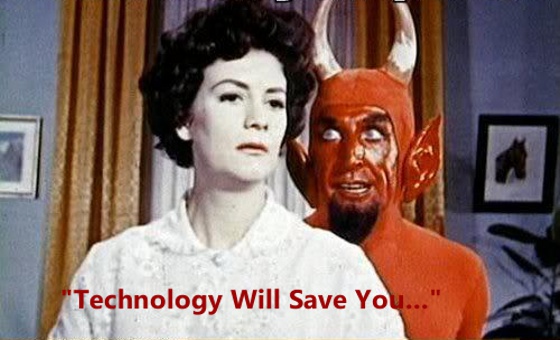I’ve made a living simplifying technology in marketing for large and small businesses that want to use both, technology and marketing techniques, to make more good money. The marketing technology helps these businesses improve interactions with their customers when tactically used through sound techniques.
For a long time, marketing technology has empowered many marketers to communicate very economically and extraordinarily fast with their chosen audiences. But there has been a severe trade-off for all this ease and economy.
Inexperienced and impetuous marketers have managed to do much damage to their companies’ brands by broadcasting tons of spam, tons of pap, tons of lame and annoying promotions to the four winds.
And you know what I’m talking about because we’ve all been victims to this onslaught for decades. The phrase junk mail has a long history dating to the days when technology wasn’t even digital and creating printed material was costly and time-intensive. The case under digital technology has only worsen.
 As professional marketers, we’ve known for a long time that the average time that a Chief Marketing Officer (CMO) lasts in a corporation is less than 4 years. A decade ago, Forbes estimated CMO’s not to last longer than 43 months before jumping ship or getting the boot.
As professional marketers, we’ve known for a long time that the average time that a Chief Marketing Officer (CMO) lasts in a corporation is less than 4 years. A decade ago, Forbes estimated CMO’s not to last longer than 43 months before jumping ship or getting the boot.
Despite extensive advances in marketing technology, ten years later CMO’s are lasting only 40 months on the job. Compare the articles and you will quickly spot the same old problems of loss of credibility and lack of results accountability plaguing the CMO decade after decade. The problem is not marketing technology. It’s marketing technique in the use of that technology.
Now Marketing Technology Is Accessible to Small Business Marketers Resulting in What?
Technology accessible 10 years ago only to large multi-national companies is now affordable, if not entirely free of charge, to small business marketers, offering incredibly more powerful efficiencies only dreamed of a decade ago. Yet if large corporation CMO’s with multi-million-dollar budgets are still taken less seriously by their superiors today than before, is there not a lesson to be learned by the small business owner with no money to spare for futile marketing despite new marketing technology?
In my experience, marketers have rushed to technology as their presumed savior from the chaos of economic turmoil and globalization. But technology can also kill you.
Hoping against all hope to reach customers with unsolicited emails, phone calls, pings, pricks and pokes, some marketers have learned the hard way that customers who resent constant interruptions are now also in greater control of the conversation thanks to (what else?) newer technology.
Email spam blockers and anti-spam legislation, voice mail boxes and do not call lists, tweet identity validation services and contact blocking features in social media platforms or just a inveterate attitude opting to abandon the use of novel tools gone stale have enabled customers and prospects to silence a marketers attempt at reaching anyone who does not want to be bothered by unsolicited promotions.
So what has technology enabled? An onslaught of cheaper interruptions to customers that costs a company its credibility, where even the lowliest of summer interns can send out a useless message to tens of thousands of clients with the click of a button simply because its possible.
Is this what technology in marketing is for?
More importantly, is this what it’s for in your hands as a small business owner?
Technology In Marketing Means Techniques That Build Trust
The Fournaise study that years ago found that 80% of CEO’s are neither impressed nor do they trust their CMO’s
also showed that 71% of CEO’s thought that the focus that marketing had placed on tools, such as marketing automation and customer relationship management (CRM) platforms, had turned into an obsession. The same has remained to this day, but now over digital media tools, like gigantic social media platforms, chatbots and global social messaging apps, Big Data Artificial Intelligence, visual and voice SEO inbound marketing, Augmented Reality, Interactive Content, and a ton of other upcoming marketing technologies to overwhelm the senses.
Like manic kids with new toys on Christmas Day, marketers are hooked on the newest and flashiest play thing in the market. Meanwhile, the bottom line suffers. Their credibility is out the window because marketers have failed to understand what technology really is.
Although in most marketing circles it is understood that technology alone fails to produce results unless the correct set of steps or processes are first in place to exploit it, only too few marketers understand the significance of this concept. Knowing that they have to produce the right kind of reading material or content, the right type of campaign offers and the right sort of strategies to impact the right audience, they nevertheless continue to misuse technology. It’s as if they have no concept of what technology means.
I think we’re living in a time when we still think of technology as mechanics, meaning machinery, that is, as if technology were the application of mathematics to deal with motion and the forces that produce motion, the way it was done back in the age of the steam locomotive. This is a dated perspective going back to the early 19th-Century and still with us well into the 21st-Century. It’s also a ridiculous perspective because it is a modernist viewpoint that culminated with the end of the Industrial Revolution, that has been over for well over a century.
In a postmodern knowledge economy such as ours, technology is more like the classical perspective that the Greek held for it. It’s the root word from which we get the word technique.
And what is technique?
An easy way to understanding is as follows:
There is a certain technique (tekhnikos), a method, manner, style, skill or system thereof (tekhnologia) to doing anything. And in marketing it is called the craft of persuading or simply salesmanship. This is what we should understand is truly lacking today when we speak of technology in the context of marketing.
In short, we don’t know how to sell half as good as we know how to fill out forms with useless text using keyboards.
Unlike the Lord of The Rings, where one ring was forged to rule all other rings, marketers ought not expect one method to rule all methods, i.e. one technique of persuasion to rule all instances of having to persuade a customer to buy something. Doing so is poor technology in marketing.
So let’s not speak of technology (software) as if it were gears in a conveyor belt (literal hardware) that can carry any true technique that a marketer should be effective at using some other way. Let’s understand what technology really is. It is a technique or a system of techniques that constitute the craft of salesmanship, and lets own up to the poor craftsmanship of so many marketers in Corporate America today.
As a small business owner, you should avoid at all costs imitating these pour souls.
A good technology in marketing is the same as a sound methodology for persuading someone to buy from you. The tool set that you use in this methodology of persuasion, whether software or hardware, is not nearly as important as the logic of your approach in persuading your customer to buy from you.
What matters most, therefore, in the art of persuasion is developing trust. If your customer won’t trust you, then you will never succeed in persuading this person to buy from you. So work on developing the ability to produce that above all other techniques. Use tools that will help you build up your credibility rather than undermine it. Use technology in marketing to attract and not to alienate your customers, technologically speaking. That’s your needle in your technological hay stack.











